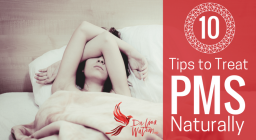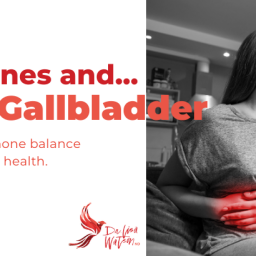
BV, or Bacterial Vaginosis is the most common vaginal infection in women worldwide. With few symptoms, aside from an unpleasant odour, many women are experiencing recurrent BV infections without receiving appropriate treatment.
But no more. Today I will take you on the PATH to treating BV, so that you don’t have to struggle with BV any longer.
Understanding BV
Bacterial vaginosis occurs when the healthy bacteria balance in the vagina is disrupted. With trillions of bacteria colonizing the vaginal tract, when those populations are out of balance the delicate pH of the vagina changes and symptoms can occur.
Unlike yeast infections, bacterial vaginosis typically has fewer symptoms. Not usually associated with pain, itching, irritation or pain with intercourse, bacterial vaginosis has just two main symptoms:
- a thin whitish discharge
- a foul “fishy” odour
These symptoms are often worse after a menstrual period or exposure to semen in the vagina – these can alter the pH balance and support the growth of less-than-desirable bacteria in the lady garden.
The most common bacteria involved in BV is Gardnerella vaginalis, but some other bacteria have been implicated as well – including Mycoplasma hominis, Ureaplasma urealyticum and Prevotella bivia…along with many others.
The metabolic activity of these bacteria causes the discharge and the characteristic odour of BV.
While BV may have few symptoms on its own, it can lead to urinary tract infections (UTIs), pelvic inflammatory disease, infertility, candida infections and an increased risk for sexually transmitted infections (STIs).
Diagnosing BV
BV is pretty straightforward to diagnose – and most women can tell you without a doubt if they are experiencing it. To diagnose BV your doctor will use what is called the Amsel Criteria. This can easily be done in office.
The PATH To BV Treatment
Understanding that BV is caused by an imbalance in healthy bacteria is the most important step in treating BV. When I am treating BV, I encourage all women to follow the PATH – four essential steps in treating BV so that it doesn’t keep coming back.
PROMOTE Healthy Vaginal Flora
 The bacteria that live in our lady garden are essential for maintaining a healthy vaginal environment. Their health often depends on our behaviours – so we need to do what we can to support them.
The bacteria that live in our lady garden are essential for maintaining a healthy vaginal environment. Their health often depends on our behaviours – so we need to do what we can to support them.
A diet high in sugar can promote the growth of undesirable bacteria. As can a diet low in fiber from plant foods. A lack of fermented foods in the diet can lead to low populations of healthy bacteria as well.
The most important thing we can do to promote healthy vaginal flora is to take a probiotic supplement. Both oral and vaginal probiotics (suppositories and creams) can support and promote a healthy balance of bacteria levels in the vaginal tract. Selecting appropriate strains is important – make sure that any probiotic you choose has adequate amounts of Lactobacillus – at least 10-12 billion per day for at least 6 months is what is recommended.
AVOID Triggers of Vaginal Infection
Just as we need to promote healthy bacteria levels, we also have to avoid those things that promote infection.
Bacteria imbalances are more common in women using the birth control pill – both due to the high doses of estrogen and the less frequent condom use in women on the pill. Antibiotic use will also alter bacteria balance and increase the incidence of BV.
Douching and wearing non-cotton based underwear will also increase the risk for BV and should be avoided, especially during active treatment for BV.
TREAT Overgrowth of Bacteria and Normalize pH
The normal pH of the lady garden is somewhere between 3.8-4.5 – a nice acidic environment. The pH is maintained in this range by the healthy bacteria – mostly Lactobacillus that colonize the vaginal tract. In BV the pH is elevated above 4.5 – sometimes as high as 7.0! Restoring the healthy pH is essential for resolving the symptoms of BV and preventing recurrence.
The best way to normalize the pH is with the use of boric acid suppositories. Having a similar pH to the healthy vaginal tract, boric acid can restore the pH and, when combined with healthy bacteria supplementation, treat BV very effectively.
Your ND will help you to understand the protocol for use of boric acid suppositories and you can have a local compounding pharmacist make the capsules just for you.
HEAL Inflamed or Irritated Tissues
 For the majority of women bacterial vaginosis is not associated with significant irritation or inflammation. If you have redness or swelling of your vulva, discuss with your Naturopath whether you may also have a candida (yeast) infection.
For the majority of women bacterial vaginosis is not associated with significant irritation or inflammation. If you have redness or swelling of your vulva, discuss with your Naturopath whether you may also have a candida (yeast) infection.
For women using the boric acid suppositories to restore healthy pH balance, there is a small chance of irritation. If this occurs a topical vitamin E gel is highly effective for decreasing irritation and healing the tissues.
Taking the PATH
Now that you have a roadmap to treating BV, I hope you will always consider the PATH when you are managing your BV. This approach has helped countless women in my practice overcome their bacterial vaginosis, and I hope it will help you too. If you’d like to work together and allow me to be a guide on your PATH, don’t hesitate to book an appointment today!
The advice provided in this article is for informational purposes only. It is meant to augment and not replace consultation with a licensed health care provider. Consultation with a Naturopathic Doctor or other primary care provider is recommended for anyone suffering from a health problem.
Select Resources
Cribby S, Taylor M, Reid G. Vaginal Microbiota and the Use of Probiotics. Interdiscip Perspect Infect Dis. 2008 http://www.ncbi.nlm.nih.gov/pmc/articles/PMC2662373/
















